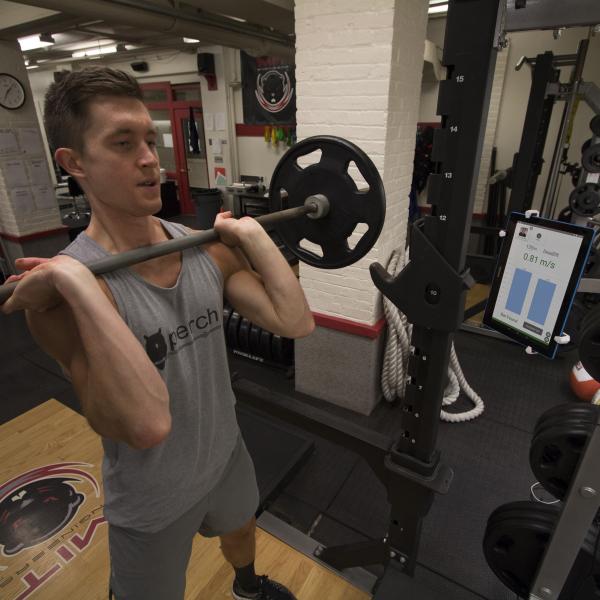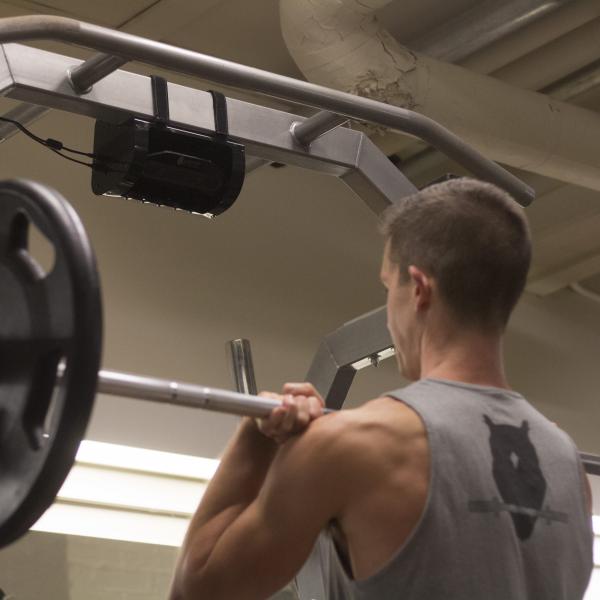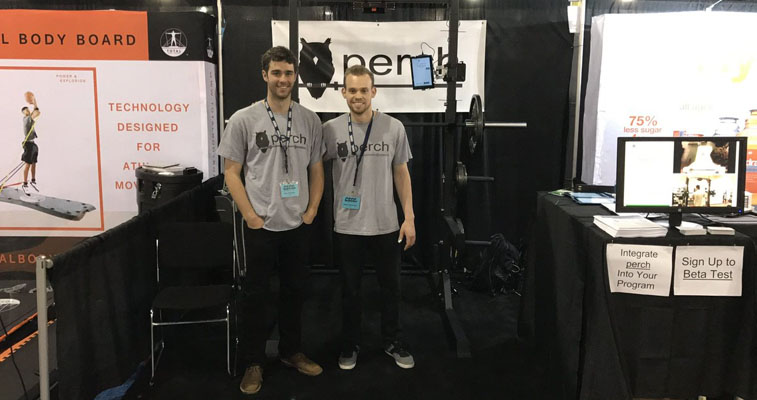Collegiate athletes have a lot on their plates, especially when taking into account their school work, practice time, and strength training in order to keep themselves fit for playing. Sometimes, in the heat of it all, accidents can happen in the school’s fitness center.
Perch Co-Founder and CEO Jacob Rothman was playing on MIT’s varsity baseball team when he got hurt during a routine workout.

“During my freshman year, I herniated a disc in my back while weightlifting,” Rothman said. “When an athlete is not taught how to lift properly, it puts them in a bad position where serious injuries can potentially happen.”
While recovering from his injury, Rothman started to brainstorm ideas for a device that could help athletes find the right form while strength training. He teamed up with other athletes on campus, and Perch was founded in 2016.
“We spent too much time coming up with the name,” Rothman chuckled. “We came up with the name because the camera is perched upon a surface, much like a bird on a tree branch.”
Initially, Perch’s product was going to be a weight rack that would help spot the user. Unfortunately, the team found the demand for that particular product was not high. Even worse, they found it to be a liability for users, as they could potentially injure themselves, which is the exact opposite of their plan.
The company pivoted and began to focus on movement tracking. When it comes to lifting weights, nailing the form is incredibly important.
Perch’s software utilizes machine learning algorithms to study a user’s movements when lifting weights. The company’s software utilizes three different devices: a camera, tablet, and computer. However, the primary use is in the tablet/camera combo. Users log into an app on their tablet, which is available for both iOS and Android. The camera is connected to the tablet via Bluetooth and can be placed on a surface near the machine.
The desktop application can be used for storing data gathered from workouts into Perch’s application called the Nest.
Perch allows users to playback the footage, and the application will point out where improvements are needed. Rothman took the video approach as a way to give more accurate feedback.

“With wearable devices, it can be difficult to collect data and get the exact numbers,” the CEO said. “With a camera, you can get results right there in front of you.”
Shortly after the company’s founding, Perch was accepted into MIT’s delta v program for student-led, early-stage startups. Rothman and his team began the development period while part of the accelerator. Typical for an early-stage company, the development was very much “all hands on deck,” with everyone contributing what they learned while attending MIT.

Since leaving the accelerator, Perch has maintained a busy schedule, further developing its tech and attending trade shows across the country. Perch made an appearance at the Collegiate Strength and Conditioning Coaches Association (CSCCA) Conference in May.
“We were able to show a prototype of our product at the conference, and received feedback from strength training coaches from colleges across the country,” said Rothman. “We had coaches from Alabama and Georgetown take a look at what we were doing, and it was validating to hear from them.”
Perch's prototypes are being demoed by a handful of Boston-area colleges but, in terms of looking ahead, Rothman wants Perch to expand into other markets.
“Currently, we are focusing on performance athletics,” Perch’s CEO said. “However, the goal is to break into the commercial gym market. Perch can be used to help personal trainers to give the average gym goer tips on how to improve their form.”
Weightlifting is not something anyone can jump into and expect results. It takes time and effort to get the movements and form down for changes to show. Perch could be the product an athlete needs to help them get that form down and prevent a potentially-serious injury from happening.
Colin Barry is a contributor to VentureFizz. Follow him on Twitter @ColinKrash.
Images courtesy of Perch and Jacob Rothman.

